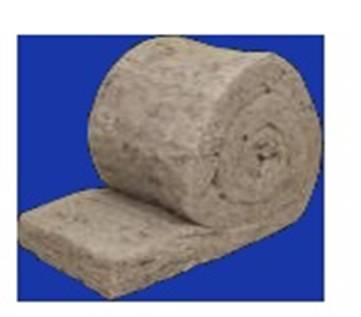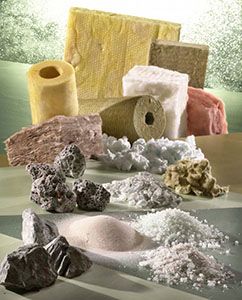Insulation Comparative Review
by Mark Row
Everything You Need to Know on Insulation
Insulation is a burning issue for so many reasons and is probably one of the most talked about topics in the last decade or so. This is not a surprising fact when you keep in mind that the modern and constantly developing industrial society brings many useful innovations but also many potential risks shown through pollution and connected health endangerment. In order of meeting such high requirements on one hand, insulation market has never been broader, offering a wide set of different insulation products that all have their characteristics, benefits and specific applications. This is why we believe that it is more than useful to learn some basics on different types of insulation, since an overall protection and optimal performance can only be achieved if all aspects of insulation are taken care of and insulation materials only complement each other. In order of helping you get the best from insulation installed, we herewith offer an insulation comparative review.
What will be discussed here are some basics on thermal, acoustic and fire and moisture insulation.
Thermal Insulation Review
As the name states, thermal insulation is used to provide a thermal envelope for a building and protect it from both exterior and interior influences that may affect the thermal stability within your home. Namely, poor wall, floor or ceiling structure may cause great heat losses and thus greater energy consumption only leading to higher electricity bills and higher level of environmental pollution. Well, different types of thermal insulation products are there to prevent this from happening. An insulator, if adequately chosen and installed, will minimize heat loss through all the gaps and holes in your building structure providing a more constant and stable inner temperature. It will also prevent and neutralize thermal bridging which is a common appearance nowadays and probably the greatest source of heat transfer, since wherever there is a continuous bridge or tunnel in the building structure, it will freely lead all the heat from your home outside, forcing you to depend on your heating devices more. This can also be a problem during summertime, since the heat from the outside will find its way inside and raise inner temperature.

Now, thermal insulation can be found in many forms. Probably the most popular and most commonly used is blanket or batt insulation which has very wide application due to its flexibility and the ability to fit into every space. It is usually found as glass, rock or sheep wool, compressed and packed into plastic bags, expanding once released. It can be used for internal wall, attic or floor insulation, when it is simply laid or rolled into the designated area and properly tightened so it does not fall off in time. When used for insulating particularly moist and humid places, it is often combined with some kind of vapour barrier which will prevent the excessive moisture and water vapor from penetrating the material and causing serious damage to the building structure.
Another type of thermal insulation that can often be seen in wall and foundation insulation are rigid insulation boards, which are basically very light and flexible, thin boards made of polystyrene, phenol or polyisocyanurate, having great insulation values and usually covered with some foil faced finish in order of preventing radiant heat transfer.
Loose fill and spray foam insulation is becoming more and more popular due to the easy installation and the ability to insulate even the narrowest and most inaccessible places such as wall cavities, for example. Loose fill insulation is simply blown into the designated area using special equipment, while spray foam insulation can be used to fill in the space through nothing more than a tiny hole in your wall since it will simply expand later on and fill the entire space with insulation. The most important advantage of this type of insulation is the fact that it can easily fill in the space, without leaving any gaps in the material, thus making sure that the entire area is well covered and protected.
Acoustic Insulation
This insulation comparison will also include acoustic insulation which has become popular in the last decade or so due to the growing awareness on noise pollution which has become a serious problem that needed to be taken care of. Namely, building contractors did not think much of soundproofing, but usually tried to reduce construction costs by avoiding adding proper insulation between the floors, which only resulted in serious problems in the words of sound insulation. This is why modern homes have different sound insulators added, depending on the main application of the building and its location. It is clear that music studios, cinemas, theatres and conference halls require higher level of acoustic insulation, while residential households can be insulated with some commonly used means such as board or glass barriers or sound absorption materials. The good thing is that besides insulation materials that are specifically designed to block or absorb sound waves and thus reduce noise, many thermal insulation products have some acoustic values why you can easily find everything you need in a single product and thus reduce your costs.

Fire and Moisture Insulation
Certain buildings, especially industrial and commercial ones, often need additional protection from fire, due to the increased fire risks. The problem is usually taken care of by adding certain fire-proof materials that will prevent the fire from spreading throughout the building structure, such as the use of structural steel in floors or fire resistant concrete. Note that structural steel is also a great source of noise why it is often complemented by some soundproofing material which is another example of how different types of insulation may complement each other. However, although some insulation materials (such as rigid insulation boards) may offer some level of fire resistance they can never completely replace more adequate means of protection but should only be used to upgrade them.
Finally, if your building is located in a humid area or you are simply having problems with moisture and damp (due to the age of the building, its location, the underground processes etc) you will need additional protection for both the building structure and the insulation material added. The problem can be taken care of by opting for materials that are moisture resistant and will not allow moisture in, but will also not trap it inside the material, but let it evaporate in time or by adding specially designed vapor barriers and damp proof membranes that will make a considerable contribution to dealing with the moisture issues.
Compare insulation products and pick the best one from our wide seletion of insulation materials for your home improvement project, or seek advice from our experts. You are welcome to leave a comment or share the article.

















































































































